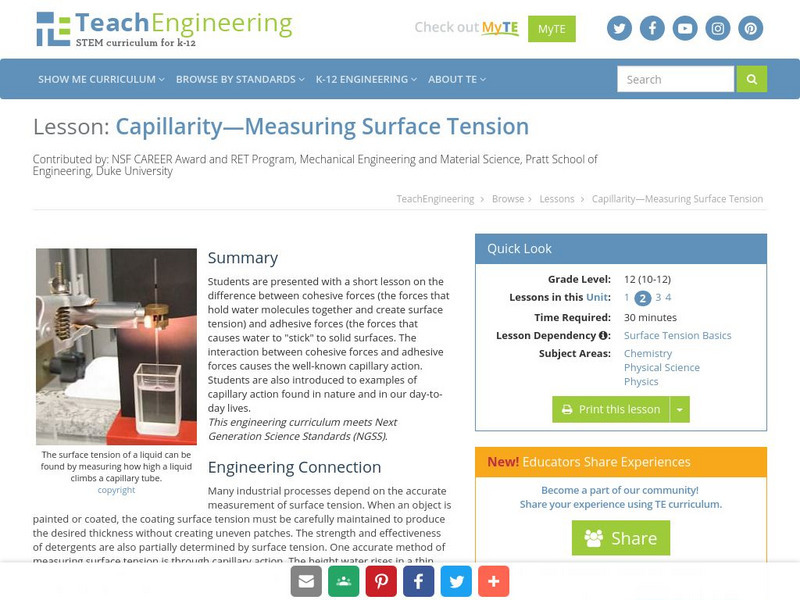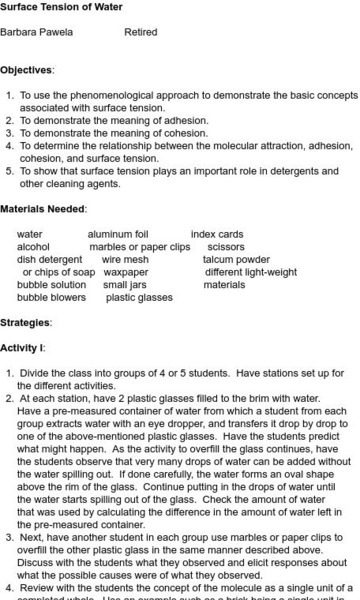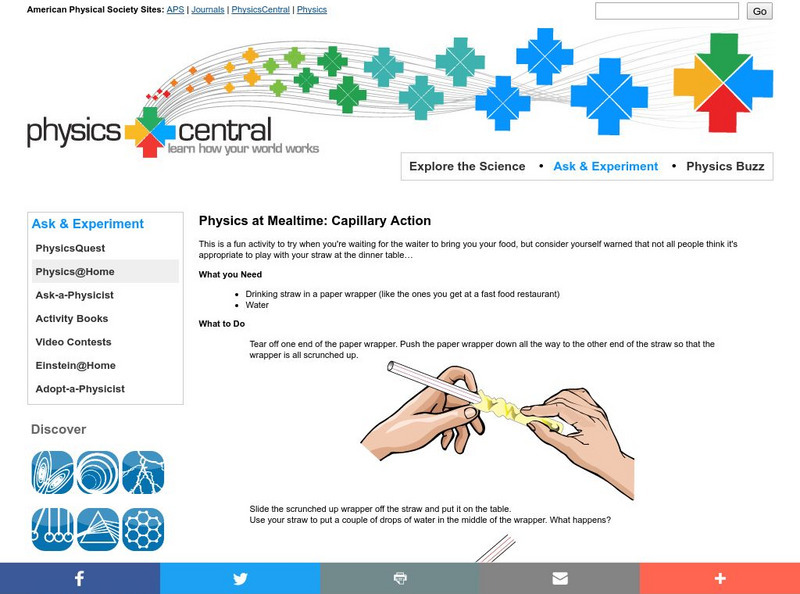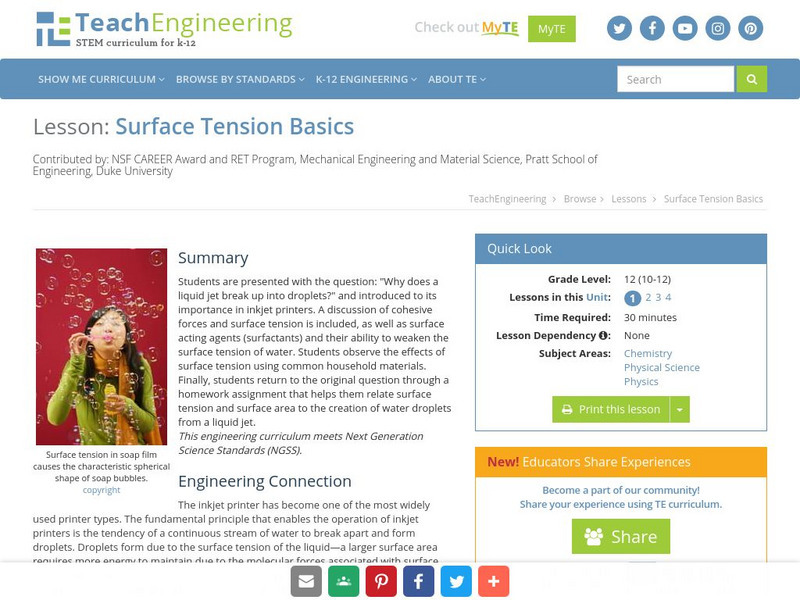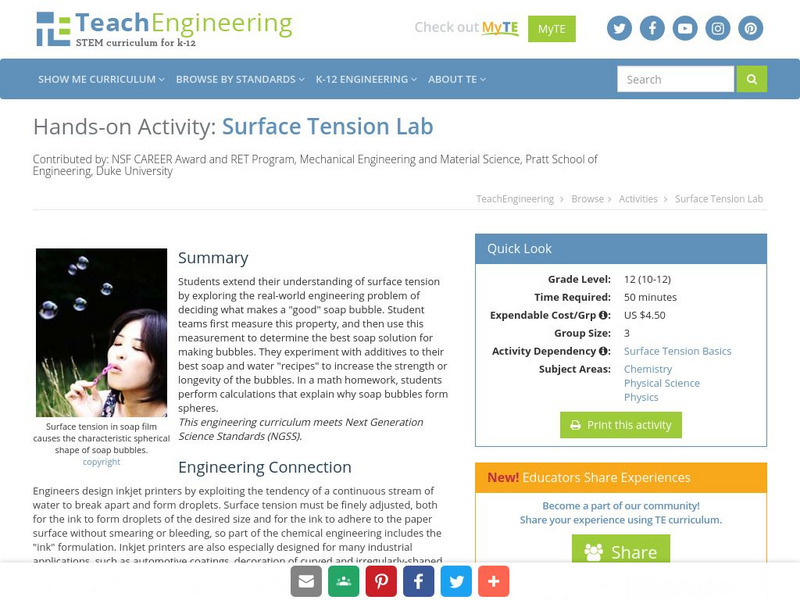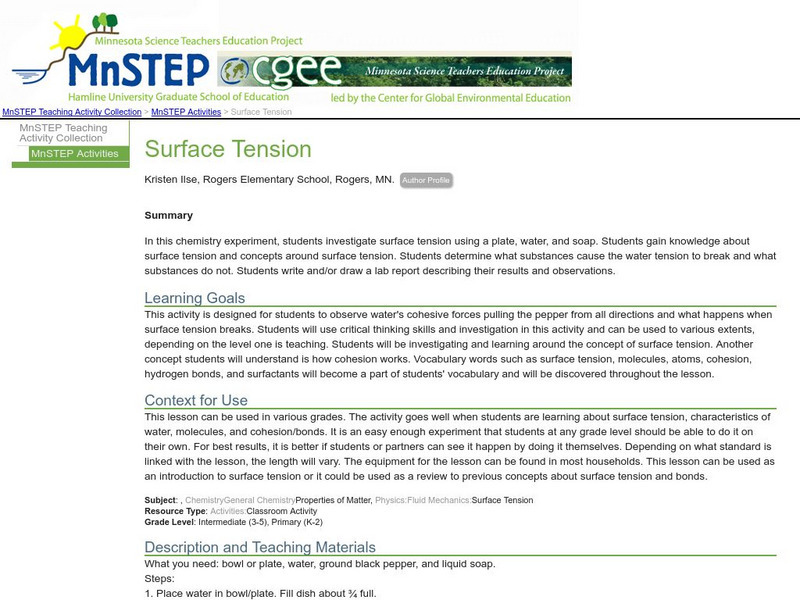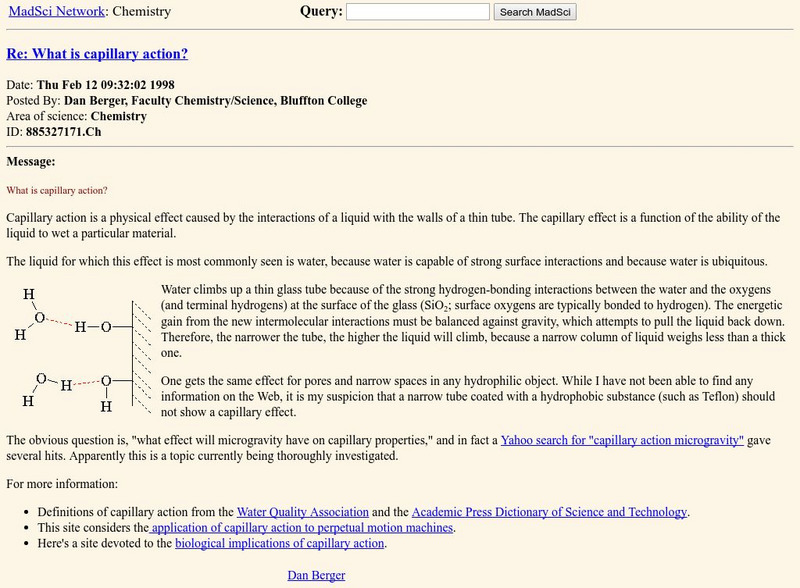TeachEngineering
Teach Engineering: Capillarity Measuring Surface Tension
Students are presented with a short lesson on the difference between cohesive forces (the forces that hold water molecules together and create surface tension) and adhesive forces (the forces that causes water to "stick" to solid...
TeachEngineering
Teach Engineering: Surface Tension
Surface tension accounts for many of the interesting properties we associate with water. By learning about surface tension and adhesive forces, students learn why liquid jets of water break into droplets rather than staying in a...
Science and Mathematics Initiative for Learning Enhancement (SMILE)
Smile: Surface Tension
This is a laboratory exercise which demonstrates the surface tension of water.
Physics Central
Physics Central: Physics at Mealtime: Capillary Action
An easy experiment that illustrates how water molecules move. Students will be able to conduct this activity quickly and easily and will only need a little liquid and a straw with a paper wrapper.
TeachEngineering
Teach Engineering: Surface Tension Basics
Young scholars are presented with the question: "Why does a liquid jet break up into droplets?" and introduced to its importance in inkjet printers. A discussion of cohesive forces and surface tension is included, as well as surface...
TeachEngineering
Teach Engineering: Exploring Capillary Action
Students observe multiple examples of capillary action. First they observe the shape of a glass-water meniscus and explain its shape in terms of the adhesive attraction of the water to the glass. Then they study capillary tubes and...
TeachEngineering
Teach Engineering: Surface Tension Lab
Students extend their understanding of surface tension by exploring the real-world engineering problem of deciding what makes a "good" soap bubble. Student teams first measure this property, and then use this measurement to determine the...
Science Education Resource Center at Carleton College
Serc: Mn Step: Surface Tension
A simple experiment investigating surface tension and the cohesive property of water, using just water, pepper, and liquid soap.
PBS
Pbs Teachers: Flying High: Taking to the Air
Explore the science of surface tension, the evolution of flight in insects and insects' anatomical adaptations. Construct insect models that illustrate the action of these adaptations and calculate the force per unit area of water surface.
PBS
Pbs Teachers: Soap Powered Boat Experiment
Examine surface tension by floating an index card that has been cut into a boat shape on water, then dropping liquid soap near the "engine" section of the index card.
Bill Nye
Bill Nye: Penny Droplets
This tutorial by Bill Nye introduces the concept of a cohesive force through an experiment involving a penny and droplets of soapy water.
MadSci Network
The Mad Scientist Network: Chemistry/cappillary Action
Capillary action is described. Examples are illustrated. Links to related topics.
PBS
Pbs Teachers: Salt and Pepper Experiment
Demonstrate surface tension by sprinkling pepper on a bowl full of water, then touching a soapy finger to the water.
Hunkins Experiments
Hunkin's Experiments: Surface Tension
Hunkin's Experiments is a group of simple cartoon illustrations of scientific principles. Some would work well in the classroom, but others have little value beyond entertaining students. All of the projects are easy to do. These two are...
US Geological Survey
Usgs: Capillary Action
Capillary is described and explained. It is related to surface tension. Examples in botany and human physiology are given.
Science Education Resource Center at Carleton College
Serc: Floating Metal Pins Discrepant Event/guided Inquiry on Surface Tension
Through a combination of an interactive demonstration and guided inquiry, learners learn the basic nature of surface tension in liquids.
Other popular searches
- Cohesion of Water
- Cohesion Water
- Water Cohesion and Adhesion
- The Cohesion of Water
- Water Cohesion and Plants
